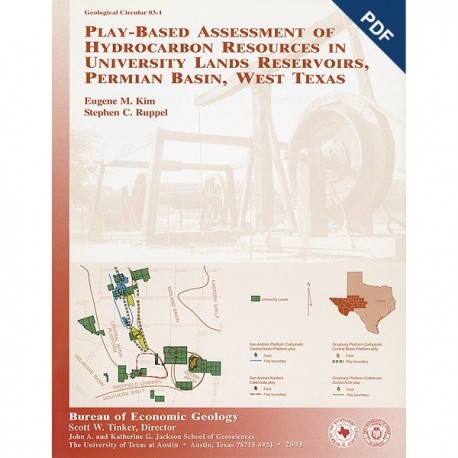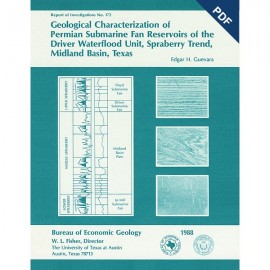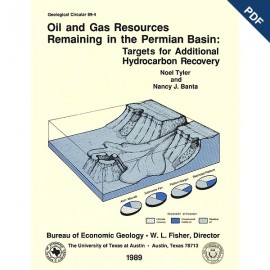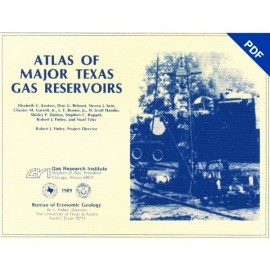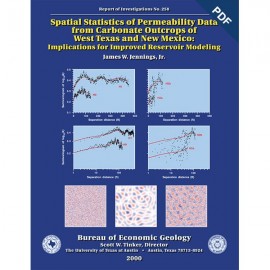Geological Circulars
-
Books & Reports
- Reports of Investigations
- Guidebooks
- Udden Series
- Geological Circulars
- Down To Earth
- Atlases of Major Oil and Gas Reservoirs
- Texas Memorial Museum Publications
- Environmental Geologic Atlas of the Texas Coastal Zone
- Mineral Resource Circulars
- Other Reports
- Seminars and Workshops
- Handbooks
- Submerged Lands of Texas
- Symposia
- Annual Reports
- Open File Reports
-
Maps & Cross Sections
- Thematic Maps
- Miscellaneous Maps, Charts & Sections
- Geologic Atlas of Texas
- STATEMAP Project Maps
- Geologic Quadrangle Maps
- Cross Sections
- Highway Geology Map
- Energy and Mineral Resource Maps
- Shoreline Change and Other Posters
- Wilcox Group, East Texas, Geological / Hydrological Folios
- Bouguer Gravity Atlas of Texas
- River Basin Regional Studies
- Featured Maps
- Posters
- Teachers & the Public
-
Geological Society Publications
- Gulf Coast Association of Geological Societies
- Alabama Geological Society
- Austin Geological Society
- Corpus Christi Geological Society
- Houston Geological Society
- Lafayette Geological Society
- Mississippi Geological Society
- New Orleans Geological Society
- South Texas Geological Society
- GCS SEPM Publications
- Historic BEG & UT Series
Play-Based Assessment of ... Resources in University Lands Reservoirs, Permian Basin, West Texas. Digital Download
GC0301D
For a print version: GC0301.
GC0301D. Play-Based Assessment of Hydrocarbon Resources in University Lands Reservoirs, Permian Basin, West Texas, by E. M. Kim and S. C. Ruppel. 24 p., 22 figs., 1 table, 2 appendices, 2003. ISSN: 2475-3637. doi.org/10.23867/gc0301D.
To purchase this publication in book format, please order GC0301.
ABSTRACT
Oil and gas resources on University Lands, 2.1 million acres in 19 West Texas counties, constitute a major asset of the University of Texas System. The original oil in place (OOIP) of the 102 major University Lands oil reservoirs is calculated to be 7,520 MMbbl. Components of the calculated OOIP include residual oil (3,761 MMbbl, 49 percent), cumulative production (1,702 MMbbl through 1999, 23 percent), remaining reserves (125 MMbbl, 2 percent), and unrecovered mobile oil (1,932 MMbbl, 26 percent). Ultimate recovery from the 49 major University Lands gas reservoirs is calculated at 2.4 Tcf through 1999. The gas resource base has been divided into cumulative production since 1987 (1.5 Tcf, 62 percent) and remaining reserves (0.9 Tcf, 38 percent).
The major oil and gas reservoirs on University Lands have been delineated into 22 plays. Historically plays of the Silurian-Devonian and San Andres-Grayburg reservoirs have been the major oil plays on University Lands. However, future potential in terms of unrecovered mobile oil is greatest in the Leonardian Restricted Platform Carbonate andSpraberry/Dean Submarine Fan Sandstone plays. Historical gas production and remaining reserves by plays are dominated by the Devonian Thirtyone Deep-Water Chert play. This play has dwarfed all other gas plays on University Lands.
Although most of the major oil and gas reservoirs on University Lands are mature, significant opportunities for incremental recovery exist in terms of unrecovered mobile oil, the volume that is the future target of reserve-growth opportunities. Advanced reservoir characterization and recovery studies conducted by the Bureau of Economic Geology on 16 University Lands oil fields have played a pivotal role in providing a better understanding of production mechanisms and geology, as well as enabling incremental production. The current play analysis of oil and gas resources provides an assessment tool for targeting major fields that have similar opportunities for incremental production. The play-analysis method for assessing University Lands oil and gas resources can be applied more broadly to other areas of the Permian Basin.
Keywords: Permian Basin, play analysis, resource assessment, University Lands, Texas, West Texas
Citation
Kim, E. M., and Ruppel, S. C., 2003, Play-based assessment of hydrocarbon resources in University Lands reservoirs, Permian Basin, West Texas: The University of Texas at Austin, Bureau of Economic Geology Geological Circular 03-1, 24 p. doi.org/10.23867/gc0301D.
